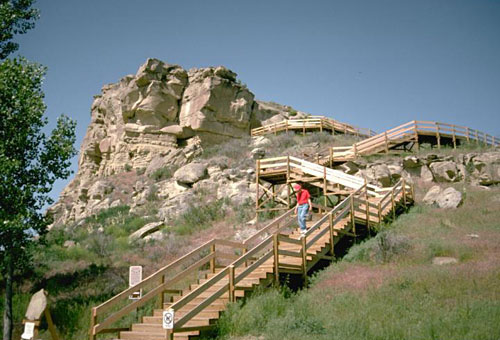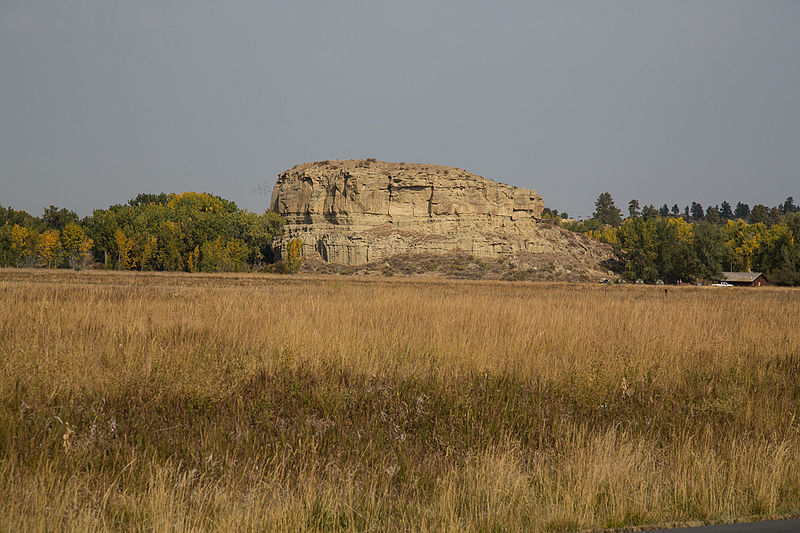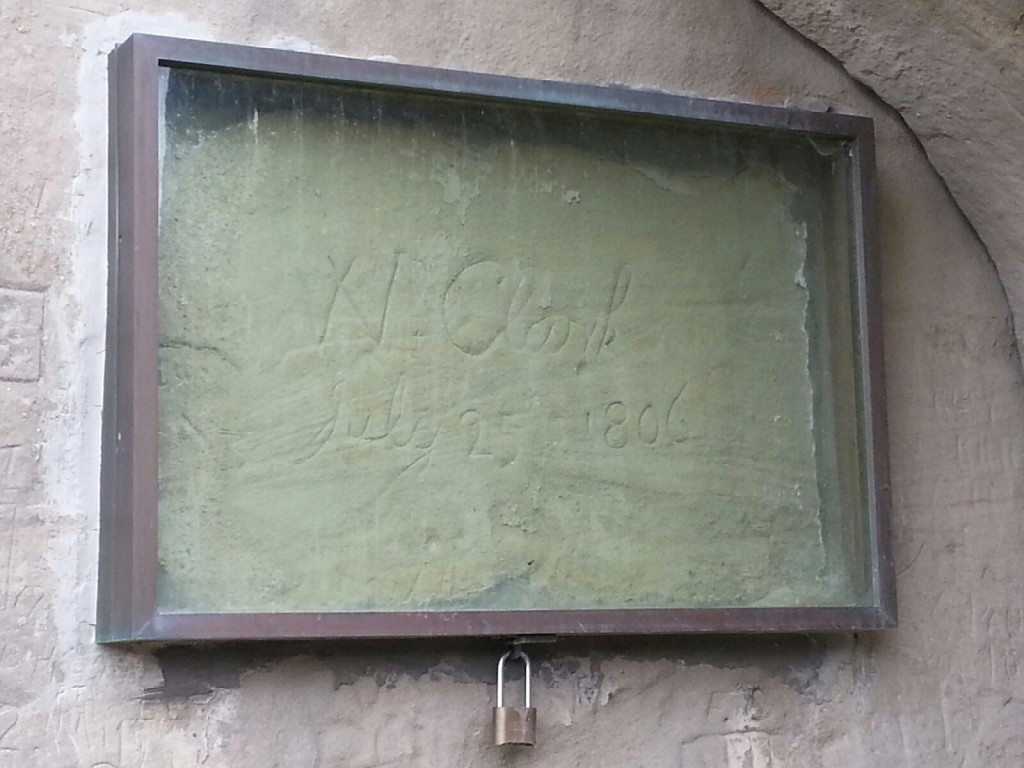I’ve mentioned in past posts that one of the reasons I find history so interesting is that human nature doesn’t really change over the course of recorded history. Cultures change, but human nature, not so much.
One of our little quirks is the desire to mark things, possibly as a bid for some minor immortality. Trees get marked all the time, often with hearts surrounding initials or names. My daughter and I were on Coronado Island a couple of weeks ago and checked out the famous Hotel del Coronado. On the grounds is a dragon tree with a plaque stating that the tree was transplanted from the Canary Islands before the turn of the 20th century and was used as a backdrop in the Marilyn Monroe film Some Like It Hot, which was filmed at The Del. That tree has been there more than a century, and while I didn’t check the entire tree for carvings, check out the photo below.
Then my dad told me that on the drive home after visiting family in Minnesota, he and my mom stopped at a National Monument east of Billings, Montana. Pompeys Pillar is a rock formation on the bank of the Yellowstone River. In his journals of the 1804-1806 Lewis and Clark Expedition, Clark called the rock “Pompy’s Tower”. Sacagawea’s young son was nicknamed Pomp by the leaders of the expedition, and they were apparently very fond of him.
But this is not a National Monument just because Clark stopped there. On the return trip from the Pacific Ocean, William Clark carved his name and the date, July 25, 1806, into the sandstone. This signature carved into a rock is believed to be the only remaining physical evidence of the expedition. He and Meriwether Lewis had separated prior to this point to enable them to explore more territory, or I’m pretty sure Lewis would have carved his name into the rock as well.
The signature has been protected by iron or glass since 1882, but was not named a National Historic Landmark until 1965, and then a National Monument in 2001. There is now a Visitor’s Center that I’ve heard is amazing, paths and picnic areas to enjoy the river and surrounding flora and fauna, and stairs to reach the signature and the top of the rock formation to take in the view.

Stairs at Pompeys Pillar National Monument, Montana. Photo: Bureau of Land Management via Wikimedia Commons
In 2013, another person signed this rock only three feet from Clark’s signature. This was reported as an act of vandalism. Although I understand the reason, I find it interesting that one carving is a national treasure and another is vandalism.
Have you ever carved your name anywhere? Care to share?



